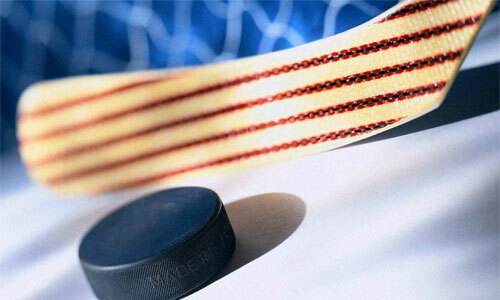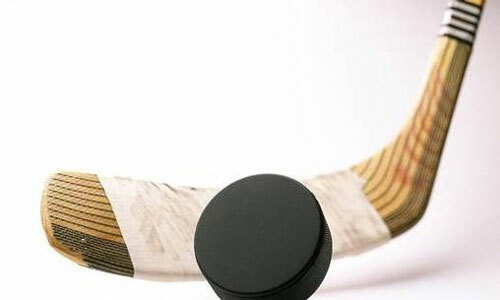Hockey is one of the most popular sports today. This sport does not stop constantly evolving. Every year more and more people are enrolled in various hockey sections and compete in competitions.

Choosing a hockey stick is necessary depending on the age and weight of the hockey player
Age of the hockey player, is of great importance when choosing a stick. There are four age categories of players, for each of which it is recommended to choose different clubs. In order to understand what product is necessary for you, read the information in the following table:
| Player Age: | How to Mark a Stick: |
|---|---|
| Children( 4 to 7 years) | Youth or yth |
| Teens from( 7 to 14 years old) | Junior or jr |
| Boys( 14 to 17 years old) | Intermediate or int |
| Adults( over 17) | Senior or sr |
As for the weight of a player in hockey, if you weigh less than 70 kg and your age is greater17 years, then it is recommended to buy a youth hockey stick. In all other cases, be guided by your age.
What are hockey sticks and what material are produced from
All hockey sticks can be divided into one-piece and one-piece. Whole products are those in which the handle and the hook are one indivisible whole. In the event of a breakdown of such a sporting attribute, you will have to buy a new one.
Composite hockey sticks, consists of two parts:
- Handles
- Hooks
Both parts of this product can be bought separately and combined with a special thermoplastic adhesive. Advantages of such a stick, is the possibility of replacing one of the two parts in the event of a breakdown, which is much more economical than buying a new stick.
If you are interested in the opinion of professionals, then, as a rule, they prefer a one-piece product. In view of the fact that such a stick is more convenient when playing. But for amateurs there will be enough and a composite hockey attributes.
Hockey sticks are made of wood, plywood, aluminum and various composite materials. Plywood products, although very cheap, but the most not very strong. Wooden hockey sticks, much stronger than plywood. But due to the fact that such a product weighs a lot, during the game, the hand quickly begins to get tired.
It should also be noted that the first hockey sticks were wooden. Now on a professional level, they are used by only a few players. All wooden sticks are only composite.
The first non-wooden hockey sticks were aluminum. Such a product does not wear out and does not deform, and can also be produced with a different weight and degree of flexibility.
As a rule, the handle in such products is made of aluminum, and the hook is made of an alloy of aluminum and wood or of a composite material. The disadvantage of aluminum hockey sticks is that aluminum is hard enough material, because of that, when using such attributes it becomes difficult to control the puck during the game.
The components of such a product( handle and hook) are not connected well enough, which will also bring some discomfort during the game. In the professional arena, almost no one uses aluminum sticks.

A mixture of fiberglass and wood, has become the first composite material used for the production of hockey sticks. Such a product did not justify itself either, and now fiberglass is used in hockey sticks to connect such materials as wood, carbon and Kevlar.
Carbon hockey sticks, won the sympathy of many professional hockey players. This product combines the advantages of wooden and aluminum products. The disadvantage of such hockey attributes is the high price and low durability.
No shortage of low durability, hockey sticks, the production of which uses a material such as Kevlar. This material makes the stick more flexible( not increasing the weight, which is good for controlling the washer, when using such attributes), and significantly increases the life of the stick.
A fairly new development is hockey sticks from titanium. Most often, titanium in such products is only a shank, and the hook is made of wood or carbon. Often, titanium is also used as an additive, to carbon or Kevlar.
Titanium products combine the advantages of aluminum and lack the disadvantages that they have. Titanium sticks are light enough, flexible and strong.
Determine the rigidity and grip of the hockey attribute
In order to understand what hockey stick with what stiffness indicator you need, you need to focus on your weight. Practically in all modern hockey sticks, the rigidity is denoted by a number from 40 to 120 on the Easton scale. The most optimal stiffness, hockey stick, corresponds to the weight of the player who will use it.
| Hockey Stick: | As marked: | As indicated on the scale of Easton: |
|---|---|---|
| Soft | Whip | 65-75 |
| Normal | Regular | 75-85 |
| Hard | Stiff | 85-100 |
| Very hard | x-stiff | 100-110 |
| The toughest | xx-stiff | 110-120 |
The stiffness of a hockey stick affects the quality of the executed throw during the game. In order to make a good throw, you need to bend the stick. The harder the product, the harder it is to do it. However, do not buy for a player weighing 90 kg, soft stiff items. Otherwise, you just quickly bring your purchase, into a game unfit for the game.
Depending on your grasp, the side in which the hockey stick is bent will be determined. In order to know the stick, with what grip you need( for the right-hander or for the left-hander), do a little "research".
Take in your hand any stick and hold it as if you have a stick in your hand, and you play hockey( that is, since it will be more convenient for you to play).
If on this very stick, your right hand will be lower, then you have a right-hand grip, if the left hand is below, then you have a left-handed grip.
When buying a hockey ice-hockey stick for a child, choose from those models whose hook is straight. Such a choice, is justified by the fact that a child at a young age, often does not know what his grip is.
And training will often change it, until it finds an optimal solution for itself. A stick with a straight hook, you can use as a right-hand grip, and left-handed.
What are the hooks in hockey sticks
Hooks in hockey sticks, differ depending on the shape, the location of the bend, as well as the plane of curvature of the hook.
The hook socks may be round, square or square with rounded corners. The round shape of the hook sock is best suited for attackers, for the defenders the ideal shape will be a square shape, and the compromise is a hook, whose sock has a square shape with rounded corners.
In hockey sticks, the bend may begin at the heel, at the toe or in the middle of the hook. It all depends on your tasks on the ice during the game. Bend at the heel, it is easier to lift the puck, bend at the sock, is more suitable for controlling the puck on the ice, and the bend in the middle of the hook is universal.
Hockey sticks with a curved hook plane are designed to lift the puck, which is quite handy when making one-touch throws.
You also need to pay attention when choosing a hockey stick, the size of the angle between the hook plane and the handle. Typically, this indicator varies between 4.5 and 6. The sharper the angle between the plane of the hook and the handle, the higher the figure.
The optimal angle for each player is selected individually. With a properly selected angle, the stick during the game lies on the ice with the entire edge of the hook, and the tape on it is worn evenly wound.
The most optimal angle between the hook plane and the handle, is selected depending on the player's growth.

How to choose the length of a hockey stick
In order to correctly choose the length of the stick under your growth, you need to stand on a flat surface and put the stick in front of you so that the hook is between the feet. It is best to choose the length of a hockey stick while standing on ice.
Then she should get you to the chin. If you spend, length selection, without skates, then the hockey stick should reach you to the tip of the nose.
If during the game you will perform the functions of the attacker, then it is better to buy the stick a little shorter, which will better control the puck. For defenders, the putters are best suited.
Since to her, it's easiest to select the puck from the attackers. When buying a hockey stick for the goalkeeper, its length should not exceed 71 cm.



